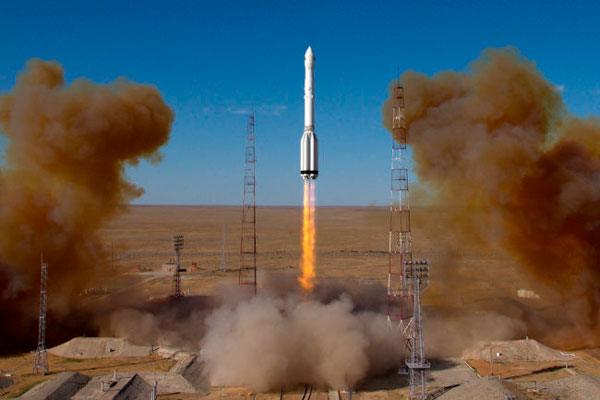
On 13 July 2019, a Proton-M rocket launched the international Spectr-RG astrophysical observatory (Spectrum – Roentgen Gamma) from the Baikonur Cosmodrome. Proton has flown with the Blok DM-03 upper stage developed by RSC Energia. The observatory will be placed at the Sun-Earth Lagrangian point L2.
The Spectr-RG astrophysical observatory is a collaboration led by Russia and Germany in the field of astrophysics.
The Lavochkin Research and Production Association (Russia) developed the Spectr-RG satellite. Spektr-RG carries two astronomy payloads: ART-XC and eROSITA developed at the Space Research Institute of the Russian Academy of Sciences (Russia) and the Max Planck Institute for Extraterrestrial Physics (Germany).
The main mission of the observatory is to study the Universe in the X-ray and gamma range of the electromagnetic spectrum. A full scientific program will take 7 years: 4 years for a broad overview of the entire sky, 3 years for a point view of individual galaxies.
The Spectr-RG observatory is designed to map the sky in the observable universe at x-ray wavelengths. The observatory will scan the sky in a wide energy range with high sensitivity and angular resolution. It is planned to discover more than a million new active galactic nuclei and up to 100,000 new galaxy clusters of galaxies. Subsequently, all the data obtained using the observatory will be open to scientists all over the world.
Currently, scientists from the B.I. Stepanov Institute of Physics of the National Academy of Sciences of Belarus together with scientists from the P.N. Lebedev Physical Institute of the Russian Academy of Sciences are working on the next-generation gamma-telescope Gamma-400.
Photo www.roscosmos.ru